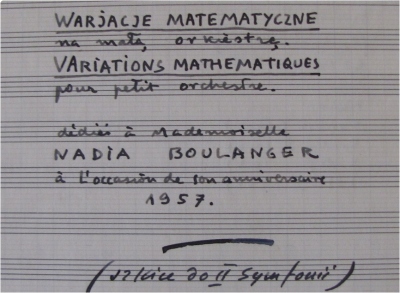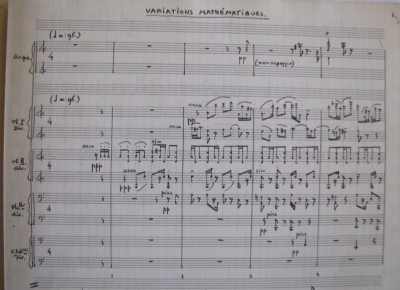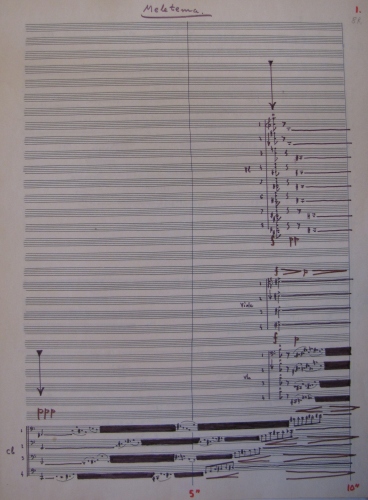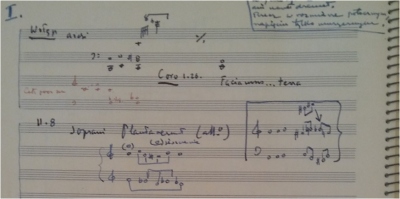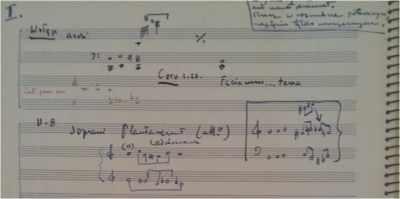Some of them are just individual scraps, cut or torn from scores, sometimes impossible to link to specific titles. Others provide an extremely valuable source of information about the composer’s interests. The most important among them include Mathematical Variations (1957), the material of which was used in the end in Symphony No. 2; Meletemata from the late 1960s, documenting the composer’s struggles with aleatory technique and sonorism, as well as plans for a dramatic piece combining opera and mystery play (Charitas) and a quasi-oratorio, Lignum vitae. There are also two notebooks: Szkice kompozycyjne 1927 [Compositional Sketches 1927] and Różne szkice i notatki 1947 [Various Sketches and Notes 1947]. While the latter was indeed treated by Mycielski as a notebook, Szkice kompozycyjne 1927 is an extraordinary document providing an insight into the youthful oeuvre of the future author of Postludes.
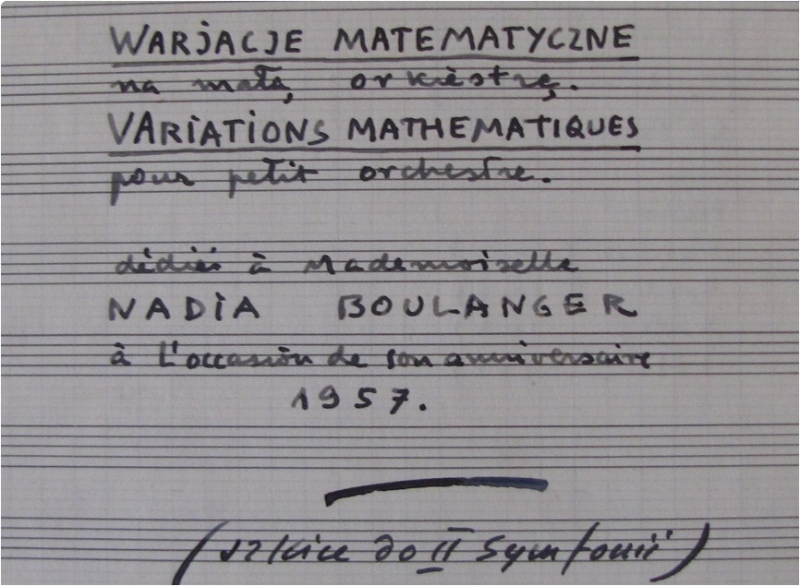
Sketches
In addition to the sheet music deposited in the Zygmunt Mycielski Archive at the National Library, there are also various extant sketches.
It was Mycielski’s first composition in which he used numerical procedures in the pre-composition process. At some point he realised that he was unable to achieve the intended sound effect and stopped working on the piece. Despite repeated attempts to complete the work, Mycielski abandoned the sketches, using some fragments as a base for a new composition, written on the basis of an original table system – Symphony No. 2 (1961).
Originating over ten years later, Meletemata (1969) was an attempt to verify the possibilities offered by new compositional techniques. Attached to his first musical fascinations, and educated in the late 1920s and early 1930s in Paris, Mycielski was rather conservative in his approach to the trends that began to emerge in Polish music after 1956. He rejected dodecaphony and serialism, the possibilities of which he worked out in detail in the late 1950s (giving them the form of a system of tables), questioned electronic and concrete music as well as sonorism and indeterminism in music, which, in his opinion, took away the value of uniqueness from a work of art. Yet in his planned piece Meletemata, elements of sonorism and aleatoricism can be discerned.
Yet in his youth Mycielski tackled the Book of Psalms, leaving us a detailed structural plan for the work and nearly completed first section of Psalm XXVIII (1934); later he approached the Book of Genesis, which he had been familiar with since childhood, and Karol Hubert Rostworowski’s expressionist morality play-drama Miłosierdzie (Charity). When it comes to the last two sources, given the instructions left by the composer, we can probably speak of his intention to compose an oratorio: Lignum vitae (1973) and a morality piece: Charitas (pre-war period, and then 1969).
